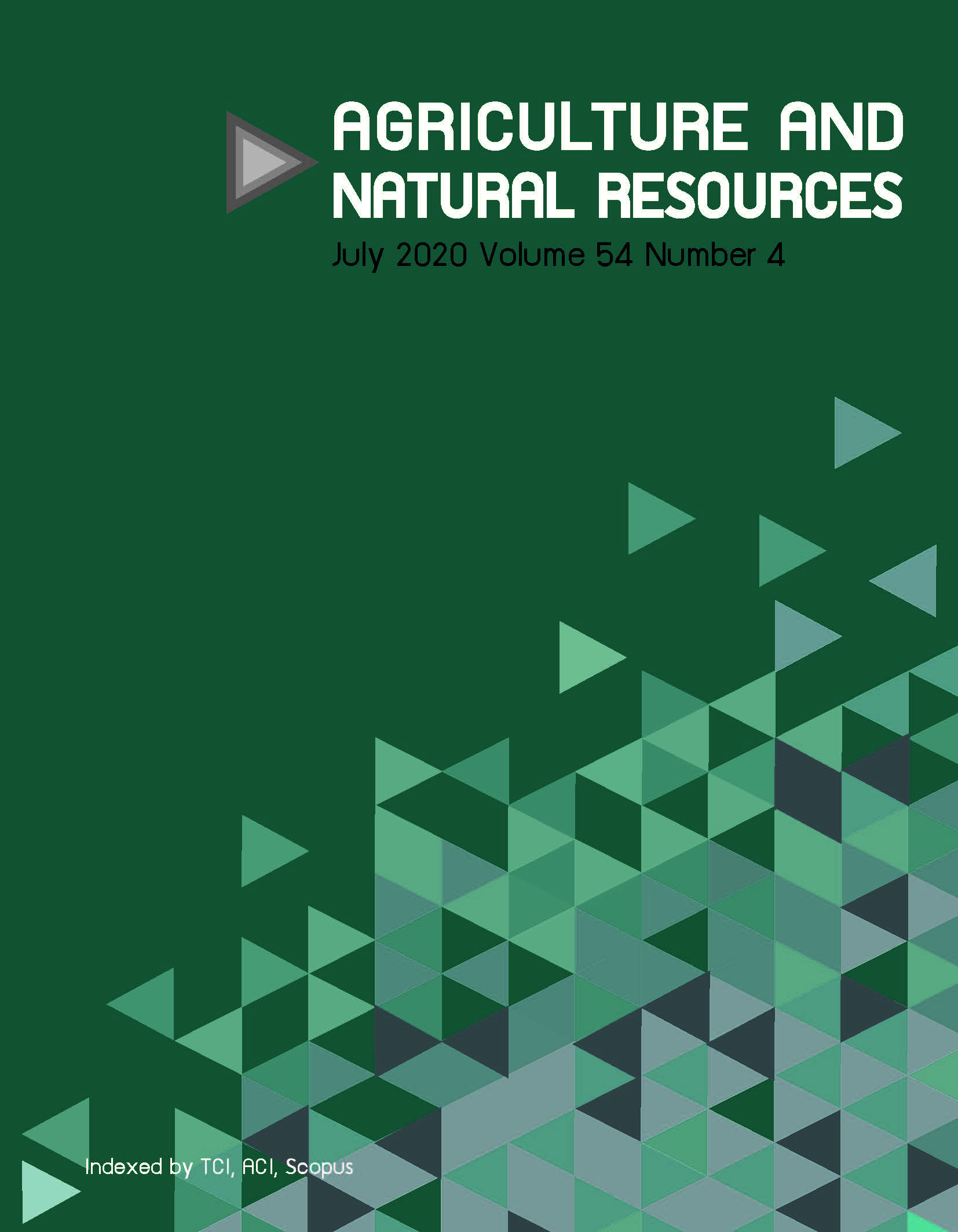Spatial and seasonal variation in the prevalence of Anaplasma marginale among beef cattle in previously flooded regions of Thailand
Keywords:
Anaplasma marginale, Epidemiology, Flooding, PCR, SeasonalityAbstract
Anaplasma marginale is the primary etiologic agent of bovine anaplasmosis, an important vector-borne disease among livestock worldwide including Thailand. The objective of this study was to measure the seasonal effect on A. marginale distribution among cattle in northern (Nan), central (Nakhon Sawan) and southern (Ayutthaya) parts of the Chao Phraya river basin in Thailand, which was devastated by flooding in 2011. Bovine blood samples were randomly collected during dry (November–December 2012; n=241) and rainy (May–June 2013; n=328) seasons. Both microscopy and molecular assays were employed to identify infected samples. Generalized Linear Mixed Models (GLMMs) were used to test putative risk factors for association of A. marginale infection with sampling location, herd size, age, sex and season. The overall prevalence of A. marginale was 14.9% ± 5% (36/241) during the dry season and 23.2% ± 5% (76/328) during the rainy season. Nakhon Sawan had a high and stable prevalence (approximately 30%), while Nan and Ayutthaya had increased prevalence in the rainy season (20 and 23.2%, respectively) compared with the dry season (2.9 and 7.8%, respectively). Prevalence of 25.7 to 29.8% was observed among 80% of large herds sampled, while 20 (dry season) to 63% (rainy season) of the animals were infected among 23% of the small herds. The GLMM analysis revealed the importance of sampling location, herd size, season and the interaction between sampling location and season, which have key roles in A. marginale infection of cattle.
Downloads
Published
How to Cite
Issue
Section
License

This work is licensed under a Creative Commons Attribution-NonCommercial-NoDerivatives 4.0 International License.
online 2452-316X print 2468-1458/Copyright © 2022. This is an open access article under the CC BY-NC-ND license (http://creativecommons.org/licenses/by-nc-nd/4.0/),
production and hosting by Kasetsart University of Research and Development Institute on behalf of Kasetsart University.







